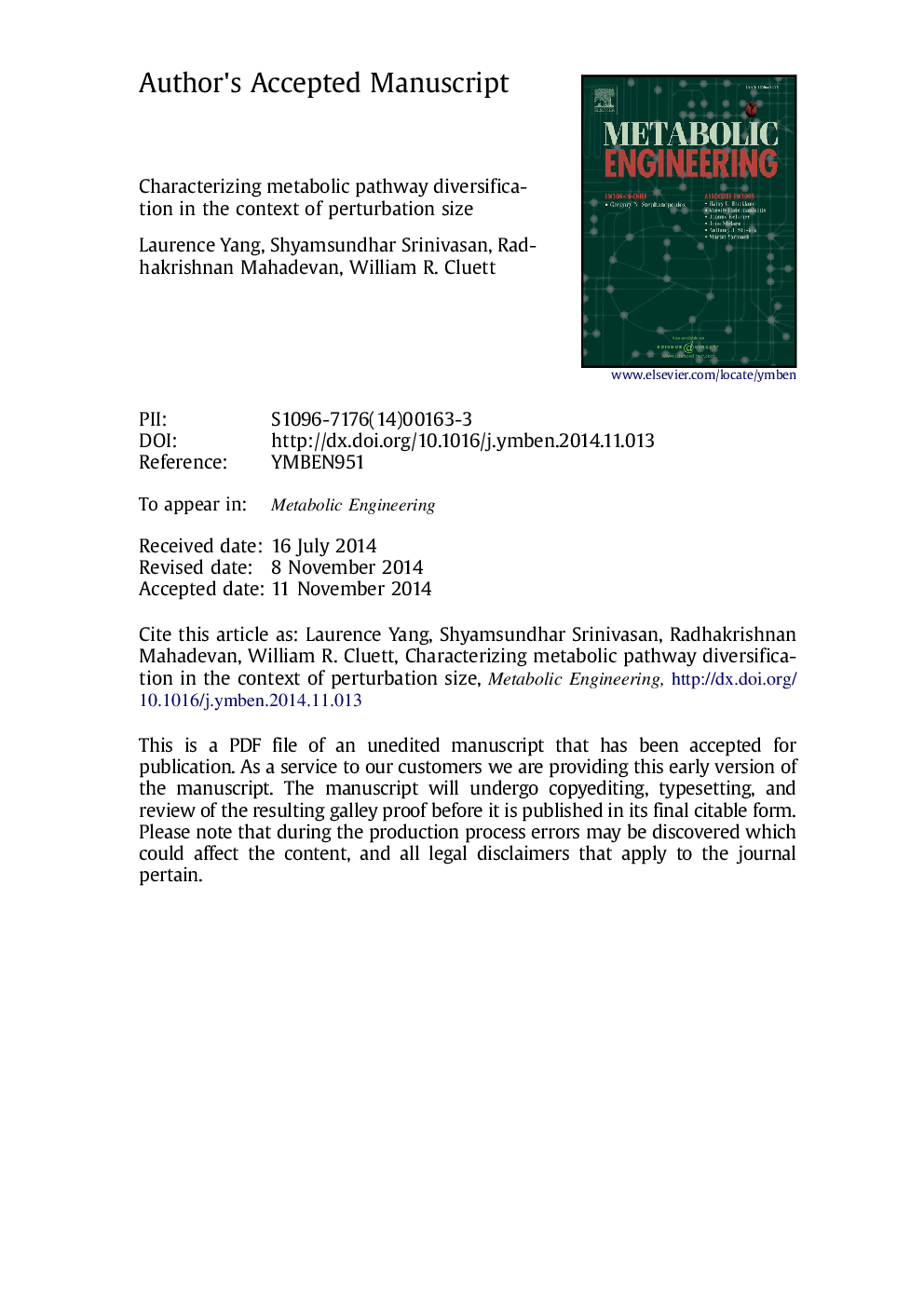| Article ID | Journal | Published Year | Pages | File Type |
|---|---|---|---|---|
| 6494455 | Metabolic Engineering | 2015 | 22 Pages |
Abstract
Cell metabolism is an important platform for sustainable biofuel, chemical and pharmaceutical production but its complexity presents a major challenge for scientists and engineers. Although in silico strains have been designed in the past with predicted performances near the theoretical maximum, real-world performance is often sub-optimal. Here, we simulate how strain performance is impacted when subjected to many randomly varying perturbations, including discrepancies between gene expression and in vivo flux, osmotic stress, and substrate uptake perturbations due to concentration gradients in bioreactors. This computational study asks whether robust performance can be achieved by adopting robustness-enhancing mechanisms from naturally evolved organisms-in particular, redundancy. Our study shows that redundancy, typically perceived as a ubiquitous robustness-enhancing strategy in nature, can either improve or undermine robustness depending on the magnitude of the perturbations. We also show that the optimal number of redundant pathways used can be predicted for a given perturbation size.
Related Topics
Physical Sciences and Engineering
Chemical Engineering
Bioengineering
Authors
Laurence Yang, Shyamsundhar Srinivasan, Radhakrishnan Mahadevan, William R. Cluett,
